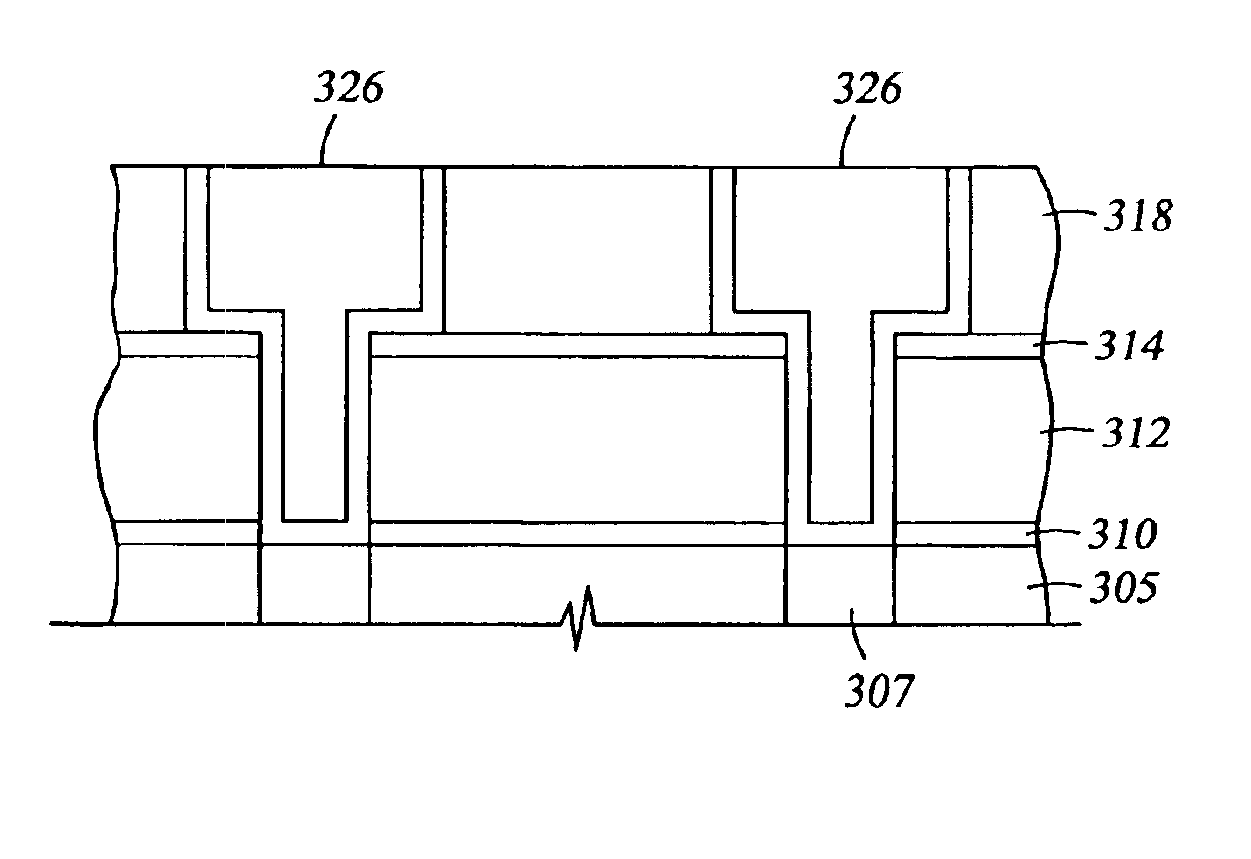Method of depositing dielectric materials in damascene applications
a technology of dielectric materials and damascene, which is applied in the direction of chemical vapor deposition coating, semiconductor/solid-state device details, coatings, etc., can solve the problems of copper etching and achieving a precise pattern, copper is difficult to etch and achieve, and the traditional process of etching/deposition of copper for forming interconnects has not been satisfactory. , the formation of short-circuits and the effect of device failur
- Summary
- Abstract
- Description
- Claims
- Application Information
AI Technical Summary
Benefits of technology
Problems solved by technology
Method used
Image
Examples
examples
[0080]Organosilicon compounds described herein were deposited as barrier layers on substrate surface and analyzed. In one example, a silicon carbide film was deposited from a mixed precursor processing gas containing an oxygen-containing organosilicon precursor and an oxygen-free organosilicon compound and compared to a silicon carbide film from a conventional silicon carbide precursor, trimethylsilane.
[0081]An oxygen-doped silicon carbide barrier layer was deposited by a mixed precursor process including introducing 1,3,5,7-tetramethylcyclotetrasiloxane (TMCTS) at about 300 mgm into the processing chamber, introducing trimethylsiloxane (TMS) at about 360 mgm into the processing chamber, introducing helium at about 1000 sccm into the processing chamber, generating a plasma in the processing chamber by applying 950 watts of RF energy, maintaining the substrate temperature at about 350° C., maintaining the chamber pressure at about between about 8.7 Torr to deposit an oxygen-doped sil...
PUM
| Property | Measurement | Unit |
|---|---|---|
| pressure | aaaaa | aaaaa |
| pressure | aaaaa | aaaaa |
| temperature | aaaaa | aaaaa |
Abstract
Description
Claims
Application Information
 Login to View More
Login to View More - R&D
- Intellectual Property
- Life Sciences
- Materials
- Tech Scout
- Unparalleled Data Quality
- Higher Quality Content
- 60% Fewer Hallucinations
Browse by: Latest US Patents, China's latest patents, Technical Efficacy Thesaurus, Application Domain, Technology Topic, Popular Technical Reports.
© 2025 PatSnap. All rights reserved.Legal|Privacy policy|Modern Slavery Act Transparency Statement|Sitemap|About US| Contact US: help@patsnap.com



